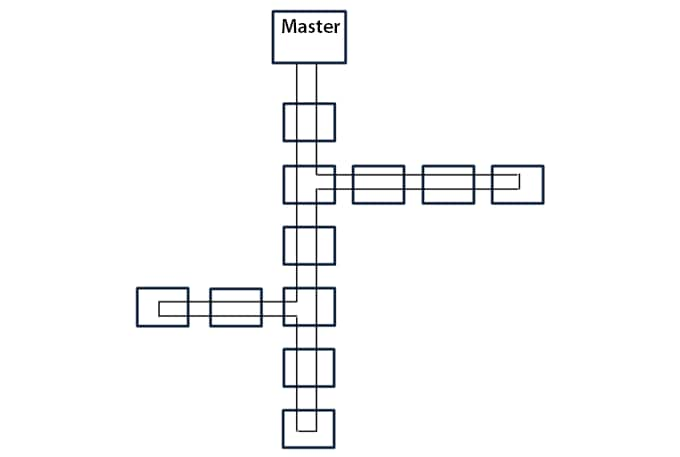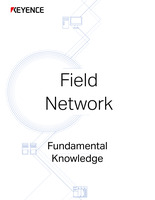INTERBUS
This section explains INTERBUS.
Overview
INTERBUS is an open network developed by a German company, Phoenix Contact, in 1987. Now, it is promoted by INTERBUS Club. The development of this network has been led by the connector manufacturer and it has been used mainly in the European automobile manufacturing industry.
Wiring Method and Communication Protocol
Wiring method
Stations are connected using 5-core twisted pair cables or optical fiber cables. Up to 256 stations can communicate at a transmission rate of 500 kbps or 2 Mbps. INTERBUS uses full-duplex communication to build a pseudo loop topology, sending data to all devices in sequence. The maximum distance between stations is 400 m (1312.3′) and the total wiring distance can be extended up to 12.8 km (41994.8′).

Communication protocol
The total frame protocol method is used. All slave information is stored in data sent from the master and each slave reads out the data stored in the area allocated to it. When a slave sends a response, it writes a value in the same allocated area to notify the master.

Characteristics
INTERBUS uses the master/slave method, which can reduce the data communication frequency because information on each slave is stored in a single piece of data to send.
A loop topology can be built using full-duplex cables. Therefore, when a communication error is detected, the disconnected point can be identified by communicating in the opposite direction.
- Company, product, and network names mentioned on this page are either trademarks or registered trademarks of their respective companies.
- Note that some information, such as applicable standards and specifications, may have changed since this page was published.
November 2015






